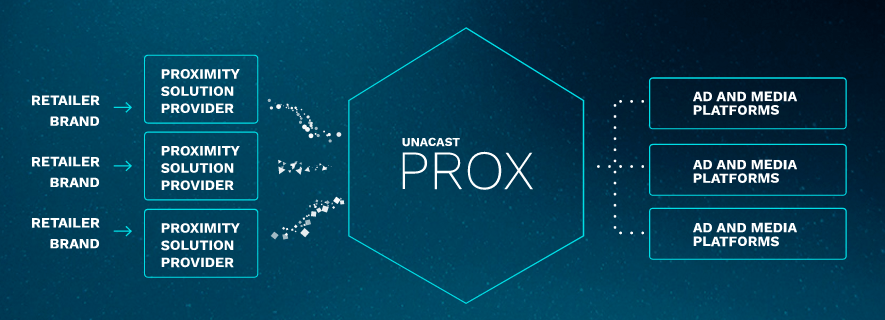The tech media and blogosphere have a love/hate relationship with beacons. They have become a shining example (excuse the pun) of local’s holy grail to “close the loop” in the consumer journey. They pick up where GPS leaves off, in the last mile to the cash register.
But detractors point out that there are flaws like subpar retail execution and consumer opt-in friction. We’ve even played this devil’s advocate role. Adding to that list of downsides is the fact that beacon networks are so fragmented.
In other words, there are hundreds of disparate networks that don’t talk to one another. So a given beacon network and its value proposition — tracking shopper behavior, ad targeting, etc — is only as good as its reach. One network can’t access the data from another.
Switzerland
This is a pain point that Unacast is solving by… unifying these networks. It takes an agnostic and data-first approach by plugging right into “proximity service providers”(PSPs) in retail locations. That includes primarily beacon networks but also point of sale systems.
Its PROX platform aggregates 52 PSPs, including the top 10 largest networks. This achieves a network effect that boosts the value of data by collecting a more multi-dimensional sample of shopper behavior. That data is then used by ad and media platforms.
“There is an opportunity and a void to create an aggregation of PSPs,” Unacast Chief Revenue Officer and industry vet Chris Cunningham told me. “There are more than 300 of them listed today.” These are currently listed in Unacast’s Proxbook PSP directory.
Value Tradeoff
It’s also about positioning beacons in a better light (sorry, pun) than retailers have done. Shoppers that refrain from jumping through opt-in hoops — app download, bluetooth settings, etc. — often do so because retailers don’t give them a compelling reason.
Some developments will ease this opt-in friction, such as Google’s Eddystone, which that eliminates the need for a separate app download (the browser is the touch point). But reform needs to mostly happen around how retailers see the beacon opportunity.
Specifically, they need to position beacons as more of an in-store utility than a way to blast shoppers with irrelevant ads. And when beacons are an ad-delivery vehicle, there’s movement to make them less about ad targeting and more about re-targeting.
Just like we’ve examined for mobile local ads, the bigger opportunity is to pan back and use location as an audience profiling tool. So it’s not just about where someone is standing right now, but what were the last 30 places they visited and what does that say about them?
True Match
For that retargeting to happen, the current state of beacon network fragmentation won’t cut it. And that’s where Cunningham and co. could bring the benefits of network effect. This would fill a large void in the road towards that long-awaited attribution holy grail.
“We’re normalizing and structuring data from multiple [PSPs] to create the holy grail of identity,” said Cunningham. “It’s a unique ID, and when you match that with an audience buy from an ad platform or exchange, you have the opportunity to get a true match.”


